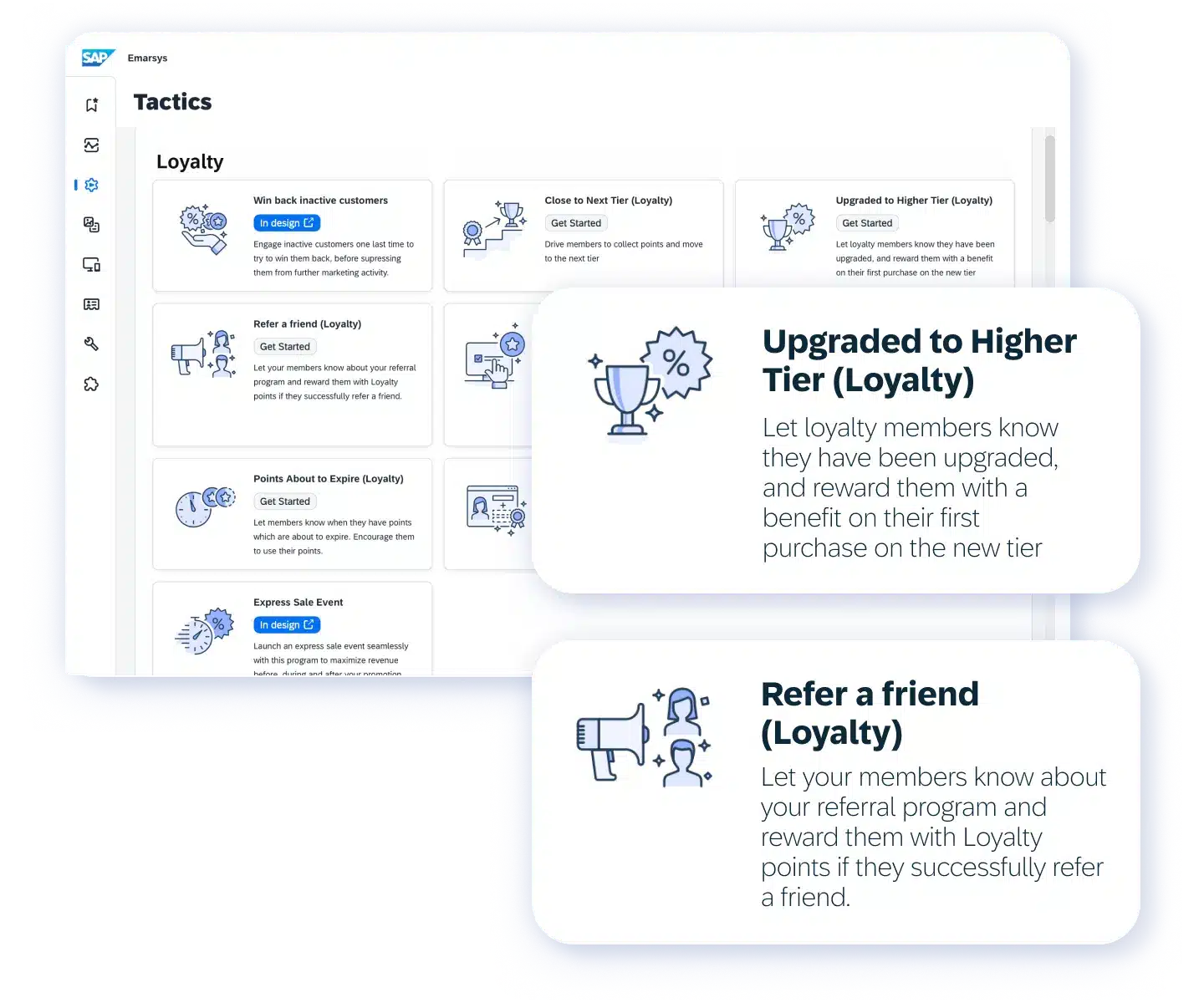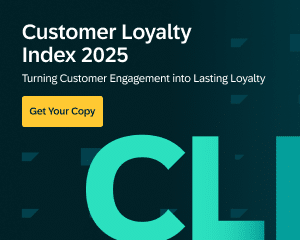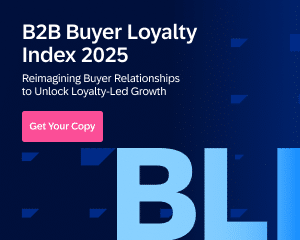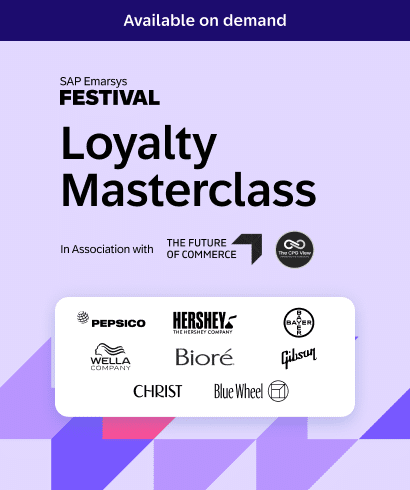It’s 2029, and e-commerce has exploded into a $5.9 trillion behemoth. That air fryer trend that seemed like a pandemic-era blip? It’s now a $2.2 billion market, doubling in size since 2023.
But if you’re an e-commerce leader, these numbers might feel more like a warning than a celebration. Because while the pie is getting bigger, the kitchen is getting more crowded and your customers are getting harder to impress. The strategies that got you here — basic personalization, standard loyalty programs, traditional marketing approaches — are starting to look like flip phones in an iPhone world.
So, what can you do? In this article, we’re going to walk through some of the key challenges today’s marketers face, and the solutions you can put in place to tackle them head-on. Let’s get started.
What are the Top E-Commerce Challenges Marketers Face Today?
Let’s talk about the top challenges e-commerce marketers face, and how anyone who’s ever nervously watched their conversion rate (so, all of us), can solve them.
Challenge 1: Integrating AI into marketing strategies effectively
The promise of artificial intelligence was supposed to revolutionize marketing—yet many professionals find themselves drowning in a sea of disconnected platforms and data.
The irony isn’t lost on anyone: we invested in AI to simplify our lives, only to end up with a complex web of technologies that don’t talk to each other. Rather than focusing on creative strategy and customer engagement, marketing teams increasingly function as technical coordinators—stitching together incompatible systems, reconciling conflicting data points, and struggling to extract actionable intelligence from fragmented information sources.

The solution: A versatile Customer Engagement Platform
Instead of getting bogged down in complex algorithms, imagine having pre-built strategies and intuitive tools that put AI’s power directly into your hands.
The right platform offers a range of ready-to-use tactics aligned with your core business goals – acquisition, conversion, and retention. Look for platforms that have templated campaigns such as abandoned cart, post-purchase upsell/cross-sell opportunities, and win-back programs. With these drag-and-drop templates, even marketers with limited expertise can launch engaging campaigns in minutes, not weeks.
Another key feature to consider is agentic AI functionality, which allows different systems to communicate and collaborate seamlessly. This capability enables advanced data analysis and segmentation, making it easier to identify valuable customer insights.
For example: The best solutions on the market leverage AI to define audiences and optimize channel selection based on customer engagement likelihood. You could use AI and agentic workflows to analyze trends in season ticket holders versus single-ticket purchasers and ask the AI to create a segment of single-ticket holders who would have benefited more from a season pass. By automating this process, your team can proactively target customers with the most relevant offers, increasing engagement and long-term loyalty.
Success story: How Pour Moi grew their active customer base by 16%
Lingerie retailer Pour Moi needed to scale personalized customer engagement with a lean team. Their key objectives were to re-engage existing customers, nurture VIPs, and attract new customers through an integrated omnichannel approach.
Pour Moi implemented SAP Emarsys’ comprehensive platform, with a focus on leveraging first-party data across digital touchpoints. The solution enabled:
- Advanced audience segmentation for targeted re-engagement and win-back programs
- VIP customer identification and look-alike targeting
- Personalized email campaigns with dynamic content control
- Automated birthday campaigns through Web Forms integration
Once campaigns were published, Pour Moi experienced growth like never before. Their customer database grew to 1.2 million customers, with opt-ins increasing from 650,000 to 800,000. And in the first month, they saw a 16% growth in active customers, reflecting the immediate positive impact on customer engagement.
“One reason that we wanted to use the ad and web channel elements is because we can be cohesive with the marketing message, and can target different types of audiences. Not only can we retarget in that way, but we can also find and create a segment of our top VIPs.”
Challenge 2: Difficulty tracking customers across multiple channels
If you’re trying to keep your brand message consistent across email, social media, your website, and maybe even a physical store, you know the struggle. Sometimes, it can feel like you’re a conductor, trying to wrangle in an orchestra that’s gotten out of control.
At one moment, you’re synchronizing promotional campaigns across platforms, at another you’re updating pricing in real-time across every channel you own. It’s not just about maintaining visual consistency—it’s about delivering a seamless narrative that resonates with customers wherever they encounter your brand.
The solution: Orchestrate omnichannel customer journeys
For CRM and e-commerce managers struggling to manage disjointed omnichannel experiences, the solution is regaining control through strategic journey orchestration. This method requires ensuring that you have multiple elements working in harmony. Here are the five must-have pieces to the omnichannel puzzle:
- Aggregate data from all customer touchpoints into a single, unified view. This single view is essential for understanding customer behavior across all channels.
- Leverage real-time intelligence so you can make data-driven decisions on the fly.
- Implement AI-powered personalization for content and product recommendations that resonate with each customer.
- Set up marketing automation across email, SMS, social media, and your website.
- Establish custom action triggers based on specific customer behaviors or business events.
A key advantage of orchestrating your channels from a single automation platform is the ability to prioritize your owned and most affordable channels first—starting with email, then escalating to paid ads only if there’s no engagement. This ensures that marketing spend is optimized, reserving higher-cost tactics for when they’re truly necessary.
Additionally, orchestrated omnichannel automation allows you to update messaging dynamically across all channels based on customer engagement. If a customer interacts with an email, the conversation can seamlessly continue across SMS, social, or web without redundant or conflicting messages.
With a cohesive approach like this, the frustration of disconnected experiences disappears, replaced by interactions that feel intuitive and considerate of their past engagement. This approach delights customers by anticipating their needs and removing friction points, creating the kind of experience that transforms casual shoppers into passionate brand advocates.

Success story: How CUE Clothing Co. turned 60% of styling sessions to sales
CUE Clothing Co., an Australian fashion retailer, aimed to transform their retail strategy by creating seamless, personalized experiences across all channels. Their key objectives were to implement a ‘Commerce Anywhere’ vision, bridge the gap between physical and digital retail, and leverage customer data for personalized engagement.
By partnering with SAP Emarsys, CUE was able to focus on unifying customer data and inventory across all touchpoints. They achieved:
- Integration of customer insights across multiple channels for personalized experiences
- Video-based styling platform for individualized styling sessions
- Multichannel wishlists integrated with marketing programs like “Price Drop” and “Back in Stock”
- A true omnichannel experience, with the ability to sell any product from any location through any touchpoint
Their results speak for themselves. The team successfully increased average order values by 5-6x, customer loyalty grew by 21%, and an impressive 60% of all styling sessions converted to sales.
Challenge 3: Crafting retention strategies that turn “ghosters” into brand advocates
Customers may “ghost” a brand for a variety of reasons, but it’s often because of the highly competitive e-commerce landscape where numerous alternatives await. A lack of personalization in the shopping experience can also contribute, as generic interactions fail to resonate with individual needs and preferences. Price sensitivity further exacerbates the issue, with a significant 81% of customers actively researching prices online before committing to a purchase. Finally, ever-shifting customer preferences and emerging trends can quickly render a brand irrelevant in the eyes of its target audience, leading to disengagement.
Losing a customer can happen in the blink of an eye, but what if we could turn the tide and turn churning customers into brand advocates?
The solution: Re-engage ghosters and increase customer loyalty
Customer retention isn’t about fancy loyalty programs or bombarding people with emails. It’s about understanding what your customers actually want and delivering it consistently. The most successful brands we’ve seen are the ones that use their data not just to sell more stuff, but to build better relationships.
Here are tried and true strategies to re-engage ghosters:
- Identify high-value segments: Not all ghosters are equal—some of your most important customers are high spenders who, for whatever reason, have stopped engaging. These customers are worth extra effort, whether through increased ad spend in paid channels or offering them exclusive, higher-value incentives to win them back.
- Personalized re-engagement campaigns: Use customer data to create targeted marketing campaigns that speak directly to the customer’s past preferences and behaviors.
- Exclusive comeback offers: Provide special incentives or discounts to entice churned customers to return and make a purchase.
- Improve the customer experience: Address any pain points that may have caused the customer to leave, such as slow delivery times or payment method snafus at checkout.
- Loyalty program enhancements: Implement a tiered reward system that offers increasing benefits and encourages customers to climb the loyalty ladder.
- Omnichannel approach: Ensure a seamless experience across all channels, making it easy for customers to re-engage regardless of their preferred platform.
SAP Emarsys offers native loyalty capabilities to bring your lost customers running back to you. With our platform, you’ll be able to launch personalized, omnichannel experiences — think tier statuses, points, offers, and rewards—for highly engaging communications that drive more conversions.

Success story: How a leading commerce consultant leverages SAP Emarsys to help their clients win
For over a quarter century, hmmh has helped engineer the digital revolution. As pioneers in connected commerce, they’ve guided countless brands through the complexities of digital transformation, offering comprehensive services from strategic planning to implementation and optimization.
With nearly ten years of specialized SAP Emarsys expertise and over 20 successful implementations under their belt, hmmh has earned their reputation as a premier SAP Emarsys partner. But what makes their approach so effective? According to hmmh, these five SAP Emarsys capabilities are game-changers for their clients:
- Customer engagement platform: Creating personalized communication that adapts intelligently across channels (mobile, desktop, in-store) by integrating loyalty programs and refining campaigns through data analysis.
- Cross-channel integration: Unifying customer touchpoints to ensure consistent brand messaging and tailored interactions based on customer behavior across platforms. This coordinated approach increases revenue, enhances customer experience, and expands reach.
- Marketing automation: Streamlining processes and boosting ROI by deploying triggered campaigns at the right moment, personalizing outreach at scale, and freeing up teams for innovation.
- Loyalty solutions: Strengthening customer relationships by incentivizing meaningful interactions, applying customer data, and creating personalized loyalty experiences.
- Data-driven personalization: Delivering relevant experiences by tailoring marketing efforts, improving segmentation, and enhancing the overall customer journey using analytics.
“SAP Emarsys is quite an easy sell, actually. Because when we show the customer what it can do and how it can benefit them, what the return on investment is, we get them convinced pretty easily.”
So, What’s Next?
E-commerce trailblazers, the path ahead is anything but easy — but it’s also packed with opportunity for those bold enough to adapt. Rather than drowning in disconnected AI systems that create more complexity than clarity, successful brands are embracing unified platforms that make sophisticated technology accessible. Instead of struggling with fragmented messaging across digital and physical spaces, forward-thinking retailers are creating seamless experiences that follow customers across touchpoints. And when confronted with customer disengagement in an increasingly price-sensitive marketplace, innovative companies are leveraging data not merely to sell products, but to build loyal relationships.
The results speak volumes—Pour Moi achieving double-digit growth in active customers, CUE Clothing Inc. converting the majority of personalized sessions into sales, and hmmh commerce agency implementing solutions that practically “sell themselves.” These aren’t isolated success stories, but evidence of a fundamental shift in approach: moving from disconnected technologies and strategies to integrated platforms that address acquisition, conversion, and retention simultaneously.
Don’t let these challenges hold your business back from claiming your share of the burgeoning e-commerce market. SAP Emarsys offers the comprehensive platform capabilities needed to overcome today’s complexities and drive measurable growth through enhanced customer experiences.







